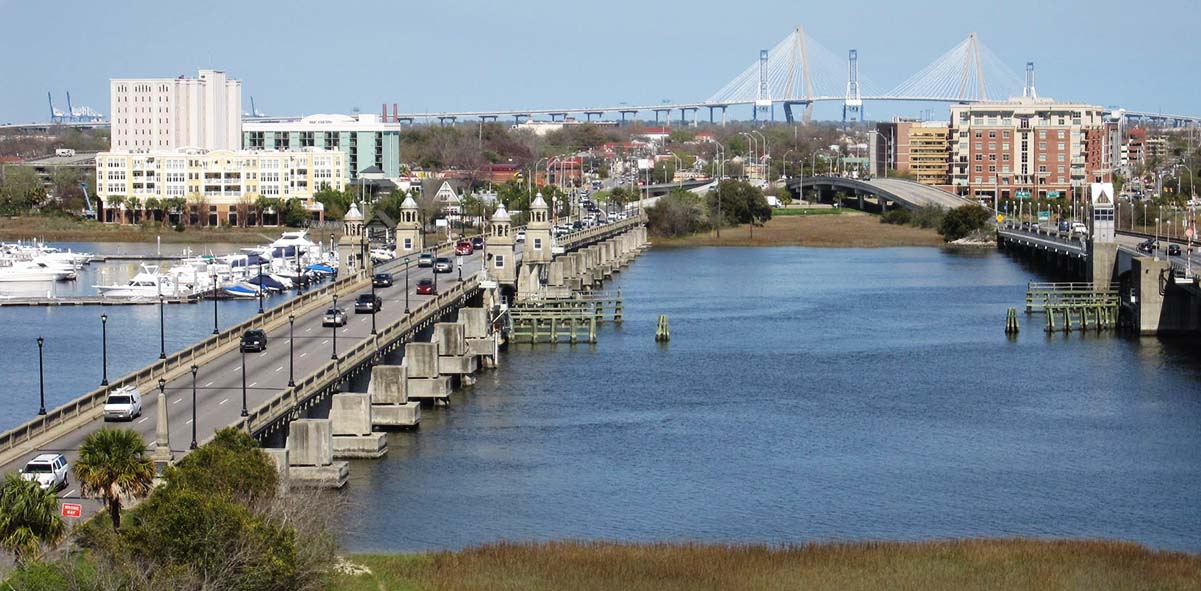
by Susmita Sengupta
The city of Charleston, South Carolina has an extensive and storied history. In 1663, King Charles II of England gave this land to eight of his closest friends who started the first settlement in 1670 and called it “Charles Town”, a name that would shorten to Charleston eventually. The first location of Charleston was across the Ashley River opposite the present day city. Envisioned as a flourishing port town, the original settlement faced continuous attacks by the French and the Spanish who took issue with England’s right to the region.
Reading about the history of Charleston, I discovered that in the colonial era, Boston and Charleston were considered sister cities as the moneyed class spent their summers in Boston and winters in Charleston. Although the original colonists were English, the growing city attracted people of all ethnic and religious groups. There was trade with Bermuda and the Caribbean that brought in migrants from those places. There were other European settlers such as the Germans, French, Scottish and Irish. It is also known as the “Holy City” due to a profusion of church steeples.
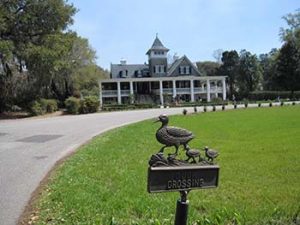 By 1770, Charleston had grown to be the fourth largest port in the colonies. There were massive plantations where rice and indigo were the main crops. The invention of the cotton gin in 1793 made cotton the primary crop and made it South Carolina and Charleston’s chief export. All these cash crops at the plantations were heavily dependent on slave labor. As most of us know, the history of slavery in the South makes for a very uncomfortable reading. Nevertheless, the account of slavery in America starts at Charleston. About forty percent of the enslaved Africans who were brought into the country passed through the port of Charleston. While most of them were sent to various plantations around the South, a sizable number of them stayed behind in South Carolina. The largest number of these bonded people worked or rather toiled in miserable conditions at the plantations dotted around Charleston.
By 1770, Charleston had grown to be the fourth largest port in the colonies. There were massive plantations where rice and indigo were the main crops. The invention of the cotton gin in 1793 made cotton the primary crop and made it South Carolina and Charleston’s chief export. All these cash crops at the plantations were heavily dependent on slave labor. As most of us know, the history of slavery in the South makes for a very uncomfortable reading. Nevertheless, the account of slavery in America starts at Charleston. About forty percent of the enslaved Africans who were brought into the country passed through the port of Charleston. While most of them were sent to various plantations around the South, a sizable number of them stayed behind in South Carolina. The largest number of these bonded people worked or rather toiled in miserable conditions at the plantations dotted around Charleston.
For better or worse, today these plantations attract a large number of tourists. Preserved as national historic sites they offer a fascinating if overwhelming and uncomfortable glimpse of life in colonial times and beyond. There are four plantations near Charleston: Middleton Place, Boone Hall, Drayton Hall and the one that we visited, Magnolia Plantation.
Magnolia Plantation and Gardens
Magnolia Plantation is one of the only plantations still owned by the direct descendants of the original owners, the Drayton family, and is open to the public at large. I learnt that the house we were in was actually the third house built just before the Revolutionary War (1775-1783). Thomas Drayton and his wife founded the plantation in 1676 when they arrived from Barbados to the new English settlement of Charles Towne. It has the oldest public gardens in America, open to public since 1870 and is the oldest tourist site in the South Carolina Low country. The house tour took us about 40 minutes and we walked through rooms opulently furnished with Early American antiques and heirlooms. Tour guides related the history of the house – the first two houses burned down and the current one was built in the 1890s over the foundation of the second home to which rooms were added intermittently.
The star attraction at Magnolia is unquestionably its gardens and grounds. To that end, visitors can tour the far-flung sites by boat and a nature train. We did not do the boat tour but yes, the Nature Train tour was superb. The wildlife viewing of water birds such as herons and egrets mesmerized my daughter. The tour took us through marshes, wetlands, lakes and forests and naturalist guides were at hand to bring the scenes to life. All of us in the tram craned our necks this way and that to catch the incredible picture of alligators sunning themselves in the plantation’s marshes.
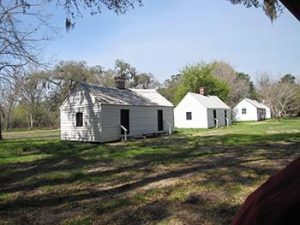 The tram also glided past the slave cabins thus immediately bringing into focus the reason how such opulence could be maintained. A separate tour is devoted to experiencing the role that Gullah culture played in shaping the Low country history. Just viewing these one room shacks from afar was a hard to forget and an incredibly moving experience.
The tram also glided past the slave cabins thus immediately bringing into focus the reason how such opulence could be maintained. A separate tour is devoted to experiencing the role that Gullah culture played in shaping the Low country history. Just viewing these one room shacks from afar was a hard to forget and an incredibly moving experience.
 Another major point of attraction in Charleston is the Patriots Point Naval and Maritime Museum. The centerpiece attraction, USS Yorktown, a National Historic Landmark, is a remarkable sight for anyone who has never stepped on an aircraft carrier. Yorktown began its service in World War II followed by the Vietnam War and then in 1968 recovered the Apollo 8 astronauts and their capsule after it splashed down into the Northern Pacific Ocean. The displays in the museum consisted of exhibits covering numerous time periods of naval history. Kids all around us were climbing into the cockpits of various aircrafts having the time of their lives. We took a while exploring the destroyer USS Laffey and the submarine USS Clamagore and came away with a renewed understanding of what it means when nations go to war.
Another major point of attraction in Charleston is the Patriots Point Naval and Maritime Museum. The centerpiece attraction, USS Yorktown, a National Historic Landmark, is a remarkable sight for anyone who has never stepped on an aircraft carrier. Yorktown began its service in World War II followed by the Vietnam War and then in 1968 recovered the Apollo 8 astronauts and their capsule after it splashed down into the Northern Pacific Ocean. The displays in the museum consisted of exhibits covering numerous time periods of naval history. Kids all around us were climbing into the cockpits of various aircrafts having the time of their lives. We took a while exploring the destroyer USS Laffey and the submarine USS Clamagore and came away with a renewed understanding of what it means when nations go to war.
 At this point, we were eager for a bit of lull in our sightseeing and decided to make a trip to the beach the next day. We were enticed by Hunting Island State Park, which not only had pristine beaches and nature trails but also had a stunning lighthouse. Built in the 1870s, the Hunting Island Lighthouse is the only publicly accessible historic lighthouse in South Carolina. The State Park was nearly a two-hour drive from our hotel but we were glad we went. One can climb up to the top of the lighthouse (167 steps) but we were not that energetic! The lighthouse is unusual because it is constructed of cast iron plate sections that can be dismantled if needed. As luck would have it, in 1889 due to beach erosion, the lighthouse was relocated about two miles inland where it stands even now. As we approached the structure, we were struck by the impressive view of the jet black painted top part of the tower peeking out from behind the trees, shiny under the sunny blue skies. The drive to the lighthouse was equally picturesque as we drove through a maritime forest, a dense canopy of trees and shrubs with intermittent glimpses of dunes and the ocean.
At this point, we were eager for a bit of lull in our sightseeing and decided to make a trip to the beach the next day. We were enticed by Hunting Island State Park, which not only had pristine beaches and nature trails but also had a stunning lighthouse. Built in the 1870s, the Hunting Island Lighthouse is the only publicly accessible historic lighthouse in South Carolina. The State Park was nearly a two-hour drive from our hotel but we were glad we went. One can climb up to the top of the lighthouse (167 steps) but we were not that energetic! The lighthouse is unusual because it is constructed of cast iron plate sections that can be dismantled if needed. As luck would have it, in 1889 due to beach erosion, the lighthouse was relocated about two miles inland where it stands even now. As we approached the structure, we were struck by the impressive view of the jet black painted top part of the tower peeking out from behind the trees, shiny under the sunny blue skies. The drive to the lighthouse was equally picturesque as we drove through a maritime forest, a dense canopy of trees and shrubs with intermittent glimpses of dunes and the ocean.
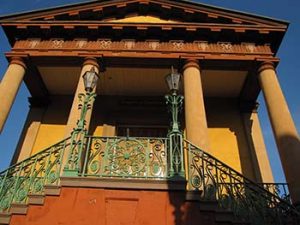 The following day we went back to exploring the city of Charleston. Our first stop was the Charleston City Market, one of the oldest markets in US. The history of the market begins in 1788 when Charles Pinckney provided the land to the city of Charleston to be used specifically as a public market, with the clause that the space remain a market forever. Thus, the market began as a row of sheds that were built between 1804 to the 1830s. Butchers, fish and vegetable vendors sold their wares from these sheds. The present-day Market hall was built in 1841 after the original hall was destroyed in a fire. While the exterior reflects the Greek Revival style with gorgeous ironwork, stucco and red sandstone, the interior is now completely modernized with gleaming glass doors and micro boutiques dotting the Grand Hall selling jewelry, crafts and collectibles, pottery, sweet grass baskets food items and other such handmade treasures.
The following day we went back to exploring the city of Charleston. Our first stop was the Charleston City Market, one of the oldest markets in US. The history of the market begins in 1788 when Charles Pinckney provided the land to the city of Charleston to be used specifically as a public market, with the clause that the space remain a market forever. Thus, the market began as a row of sheds that were built between 1804 to the 1830s. Butchers, fish and vegetable vendors sold their wares from these sheds. The present-day Market hall was built in 1841 after the original hall was destroyed in a fire. While the exterior reflects the Greek Revival style with gorgeous ironwork, stucco and red sandstone, the interior is now completely modernized with gleaming glass doors and micro boutiques dotting the Grand Hall selling jewelry, crafts and collectibles, pottery, sweet grass baskets food items and other such handmade treasures.
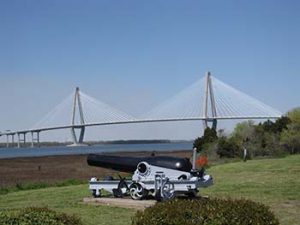 Not too far away, we got a glimpse of the U.S. Custom House, an imposing Classical design with Corinthian columns that was completed in 1879 after a hiatus of few years due to the start of the Civil War. At a few minutes walking distance was the Old Slave Mart Museum, a former slave auction building that details the role of Charleston and South Carolina in the slave trade. We walked past cobblestone streets and beautiful pastel colored houses in hues of pink, yellow, blue, and felt ourselves move back in time. Soon our walk took us to the Waterfront Park, a broad, gorgeous swath of parkland along the Cooper River, with a pier extending far out into the river. Portions of the park overlooked into restored marshy lands and the floating dock provided a magnificent unimpeded view of another of Charleston’s key attraction, the Arthur Ravenel Jr. Bridge. Our trip to Charleston showed how the modern and the old could exist harmoniously side by side.
Not too far away, we got a glimpse of the U.S. Custom House, an imposing Classical design with Corinthian columns that was completed in 1879 after a hiatus of few years due to the start of the Civil War. At a few minutes walking distance was the Old Slave Mart Museum, a former slave auction building that details the role of Charleston and South Carolina in the slave trade. We walked past cobblestone streets and beautiful pastel colored houses in hues of pink, yellow, blue, and felt ourselves move back in time. Soon our walk took us to the Waterfront Park, a broad, gorgeous swath of parkland along the Cooper River, with a pier extending far out into the river. Portions of the park overlooked into restored marshy lands and the floating dock provided a magnificent unimpeded view of another of Charleston’s key attraction, the Arthur Ravenel Jr. Bridge. Our trip to Charleston showed how the modern and the old could exist harmoniously side by side.
If You Go:
Magnolia Plantation and Gardens
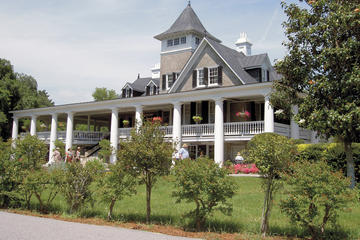
Half-Day Magnolia Plantation Tour with Transportation
About the author:
Susmita Sengupta is a freelance writer who loves to travel. She and her family have traveled to various parts of the USA, Canada, Europe, the Caribbean, Middle East, Southeast Asia and India.
All photos are by Susmita Sengupta:
A view of the city from the hotel room
The house at Magnolia Plantation and Gardens
An alligator in the sun with water birds in the marsh at Magnolia Plantation.
The row of slave cabins at Magnolia Plantation.
Navy planes on display aboard USS Yorktown at Patriots Point Naval and Maritime Museum.
The Hunting island lighthouse.
An exterior view of Charleston City Market.
Cannon at Patriots Point with the cable stayed Arthur Ravenel Jr. Bridge in the background.

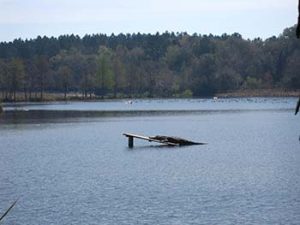




Leave a Reply
You must be logged in to post a comment.